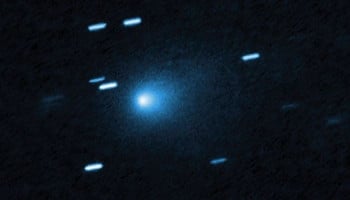
In an astonishing development in the realm of astronomy, one of the distant Galaxies named JADES-GS-z14-0 has been discovered to be containing oxygen just 300 million years following Big Bang.
According to The Express Tribune, the discovery was brought about with the help of the ALMA telescope. It serves as an indication of galaxies formating and maturing far quicker than previously believed.
The galaxy in question, discovered in 2024, is the farthest galaxy observed by astronomers at a distance of 13.4 billion light years from Earth.
Having a significant amount of Oxygen, the JADES-GS-z14-0 galaxy comes in contrast to the predictions made by scientists earlier that the universe lacks such heavy elements. This much amount of oxygen in a galaxy means that the star formation and chemical enrichment occurs rapidly.
The groundbreaking development was brought to light by two independent research teams, giving us a sneak peek into a more accurate and precise distance measurement of the galaxy and invalidates timelines of galaxy evolution presented conventionally.
Following this discovery, scientists recommended a collaboration between the ALMA telescope and the James Webb Space Telescope (JWST) to advance early cosmic discoveries.
















